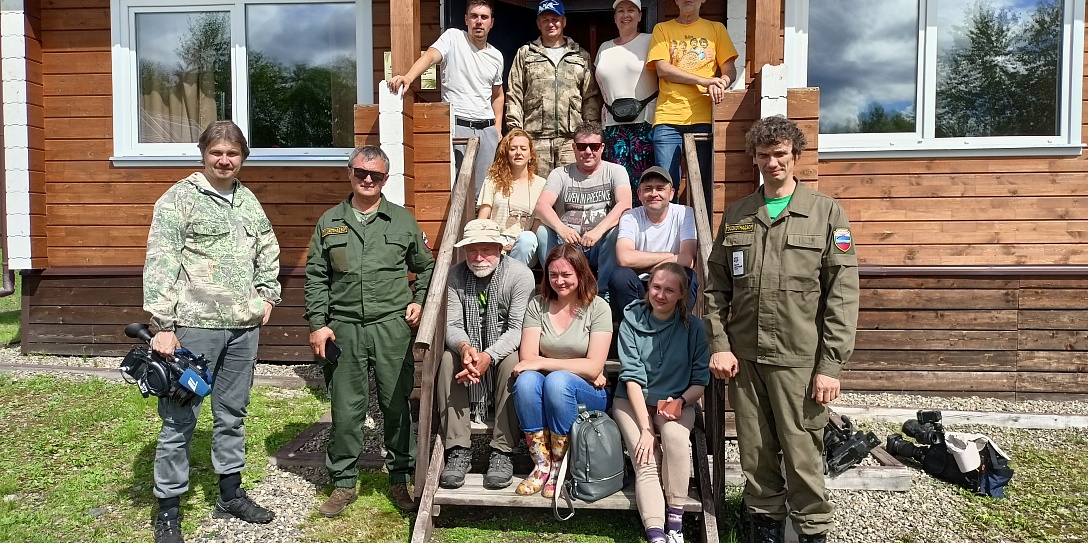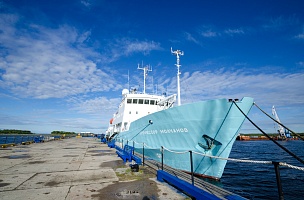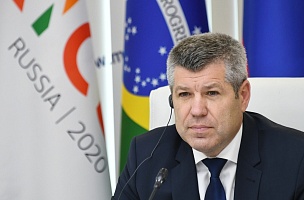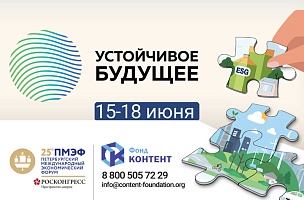The Roscongress Foundation and the Amur Tiger Centre organized a press tour for Russian journalists to the Bikin National Park as part of the preparations for the 2nd International Tiger Forum. The aim of the event was to raise public awareness of wildlife conservation issues and the forthcoming Forum.
During the press-tour journalists were told about programmes to support indigenous people and specially protected natural territories in the tiger range, as well as about the principles of tigers’ non-conflicting coexistence with humans.
Bikin is a specially protected natural area of federal importance located in Primorye Territory in the Bikin River basin. The total area of the territory is 1.160 million hectares. This is the largest specially protected natural area in the tiger habitat. In 2018 the territory of the park was included in the UNESCO World Natural Heritage List.
The press tour began with a visit to Krasny Yar village in Pozharsky district of Primorye Territory, namely the ethno-cultural site Myoo. There the tour particiapnts took part in a ritual of appeasing spirits at the fire, tied ribbons for happiness and health, and watched a performance of the creative group Kesihi, which means «happiness» in Udegean. Aleksey Kudryavtsev, director of Bikin, met the journalists and told them about the life and work of the park.
The park occupies the territory of the ancestral residence of various indigenous peoples of Russia: the Udege people, the Nanai people, and the Orochi people. The village Krasny Yar, located on the left bank of the Bikin River near the western border of the Park, is a place of compact residence of the Udege people. For centuries, they have led a traditional way of life and carried out their economic activities here: fishing, hunting, gathering — methods that do not harm nature. «Protection of their habitat and creation of conditions for preserving their traditional way of life, while involving them in the management of the park is one of our main tasks,» Alexei Kudryavtsev noted. «The park’s charter stipulates that indigenous people have the right to hunt and have a priority in provision of jobs. The Udege people supervise their own ancestral hunting grounds as employees of the Park’s protection department, and the local population is involved as workers in the creation of infrastructure facilities, which appeared in large numbers in the village thanks to the Amur Tiger Centre.»
Alexei Kudryavtsev gave journalists a tour of the newly built social infrastructure facilities, as well as local attractions. New construction included a new hospital and dentist’s office in the village, a bakery and post office, a community center and kindergarten, a library and a chess club, a village administration building and a police station, an apartment building for national park employees. Broadband Internet and a power grid have been laid out, plus a monument to Dersu Uzala (and in his person all explorers and explorers of Ussuri Krai) was opened, and a memorial to participants of the Great Patriotic War was built.
Bikin is a home not only to the indigenous peoples of Russia, but also for the Amur tiger. Protection of this animal is one of the main priorities of the park. Today its territory is inhabited by no less than 40 animals, which accounts for 6.5% of the world population of this subspecies. For Udegeans the tiger is a sacred animal. For centuries they have believed that it is possible to live with a tiger in the same habitat and have been doing so successfully for many centuries.
The journalists then visited the Takhalo checkpoint on the Bikin River and the Bikinsky cordon, where they learned about the work of indigenous peoples’ inspectors in protecting the territory of the Bikin National Park. The media representatives were shown how to install photo traps to monitor the Amur tiger population, as well as how to use quadcopters to patrol the area to detect fires, illegal logging and poaching.
In addition, a friendly conversation with journalists was held, which was attended by Yuri Kolpak, acting head of the Department of Hunting of the Government of Khabarovsk Territory and Alexei Surovy, Deputy Minister of Forestry and Hunting of Primorye Territory.
«The positive experience of the Bikin Park in involving the indigenous population in managing the park and developing ecotourism on its territory is advisable to be applied in Anyuisky Park, where the largest population of the Amur tiger in Khabarovsk Territory is concentrated,» Yury Kolpak believes. «The Amur Tiger Centre is building social infrastructure in the settlement of Arsenyev, which is situated on the border of Anyuisky Park, similar to those built in the village of Krasny Yar. Their opening will not only prevent the outflow of the local population from its traditional habitat, but also promote the development of eco-tourism, so popular nowadays. It will have a positive effect on the preservation of the region’s environment and wildlife.»
When asked how many tigers live in Khabarovsk Territory Yury Kolpak answered that their population is increasing. «Ten years ago, there were about 110 animals in Khabarovsk Territory and now we can say with certainty that their number has increased. For example, photo traps show that in recent years, before the outbreak of the African swine fever, some tigresses were carrying up to four cubs. Professionals know that four cubs in a litter is atypical. So, it must have meant that there was every possibility to nurse so many of them. The cubs stay with their mother for two years,» Yury Kolpak explained.
Alexei Surovy spoke about the current system of protection of the Amur tiger in Russia, its food resources and habitat, as well as about methods to resolve conflicts that arise between humans and predators. «As a rule, conflicts arise due to human fault. Inadequate supervision of pets, lack of fencing of home areas, throwing garbage in places not intended for it, and injuries or illnesses of the predator provoke tigers to enter populated areas and attack agricultural and domestic animals. In most cases, to prevent such situations it is enough to inform the population and explain the reasons behind tigers’ behaviour. Tigers do not clash with humans on their own, they have a strong instinct for self-preservation and if they take certain actions unusual for them, it means there are valid reasons for that,» said Alexey Surovy. He also added that a new rehabilitation centre for tigers is being built in Primorye Territory with the support of the Amur Tiger Center.
The results of efforts to conserve the tiger in all tiger-range countries over the last 12 years, new priorities for the future cooperation of the interested parties, as well as the issues of comfortable coexistence of the tiger and humans will be discussed at the 2nd International Tiger Forum, which will be held in Vladivostok on 5 September 2022, the opening day of the Eastern Economic Forum. More information about the Forum can be found at tigerforum2022.com.






